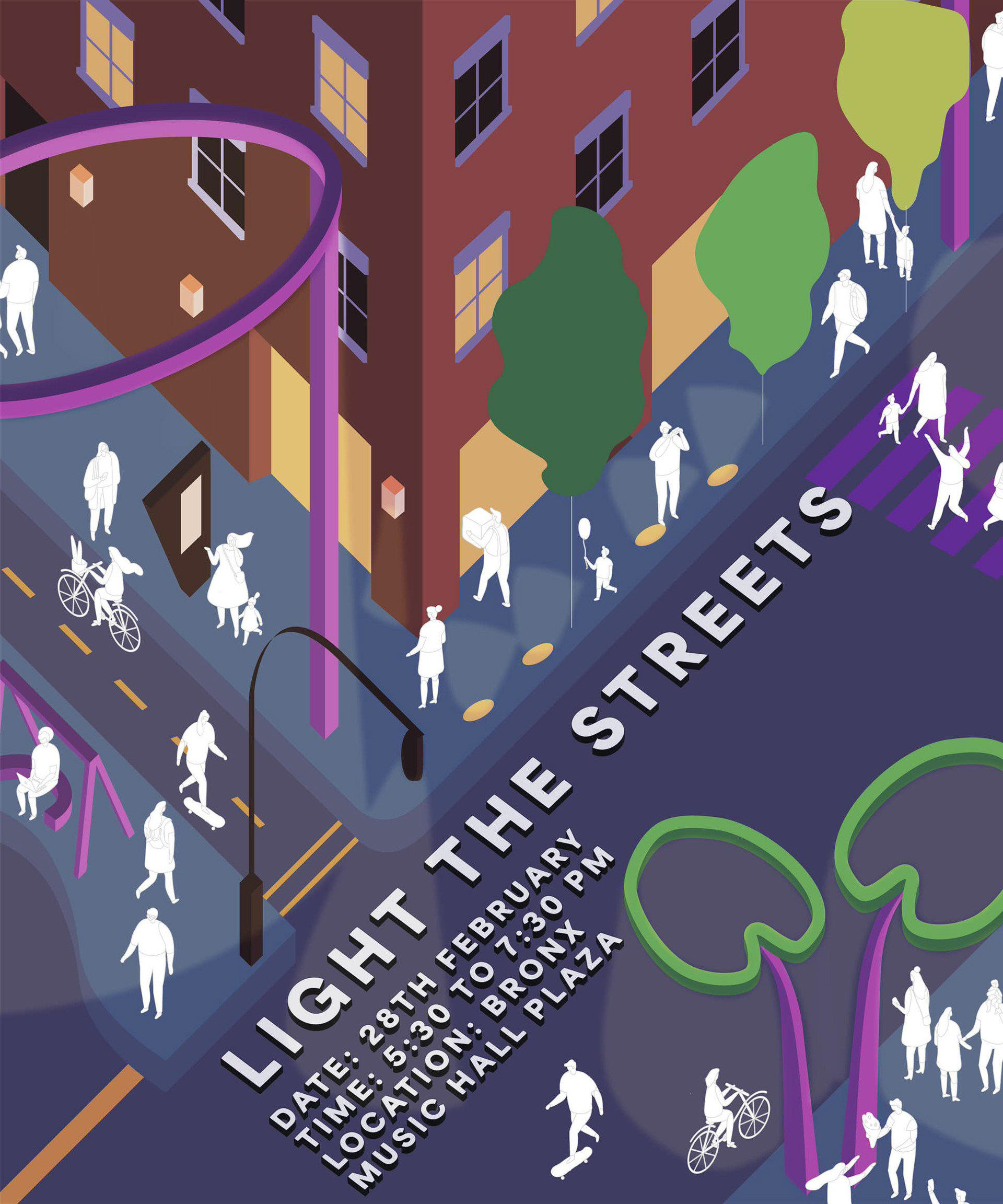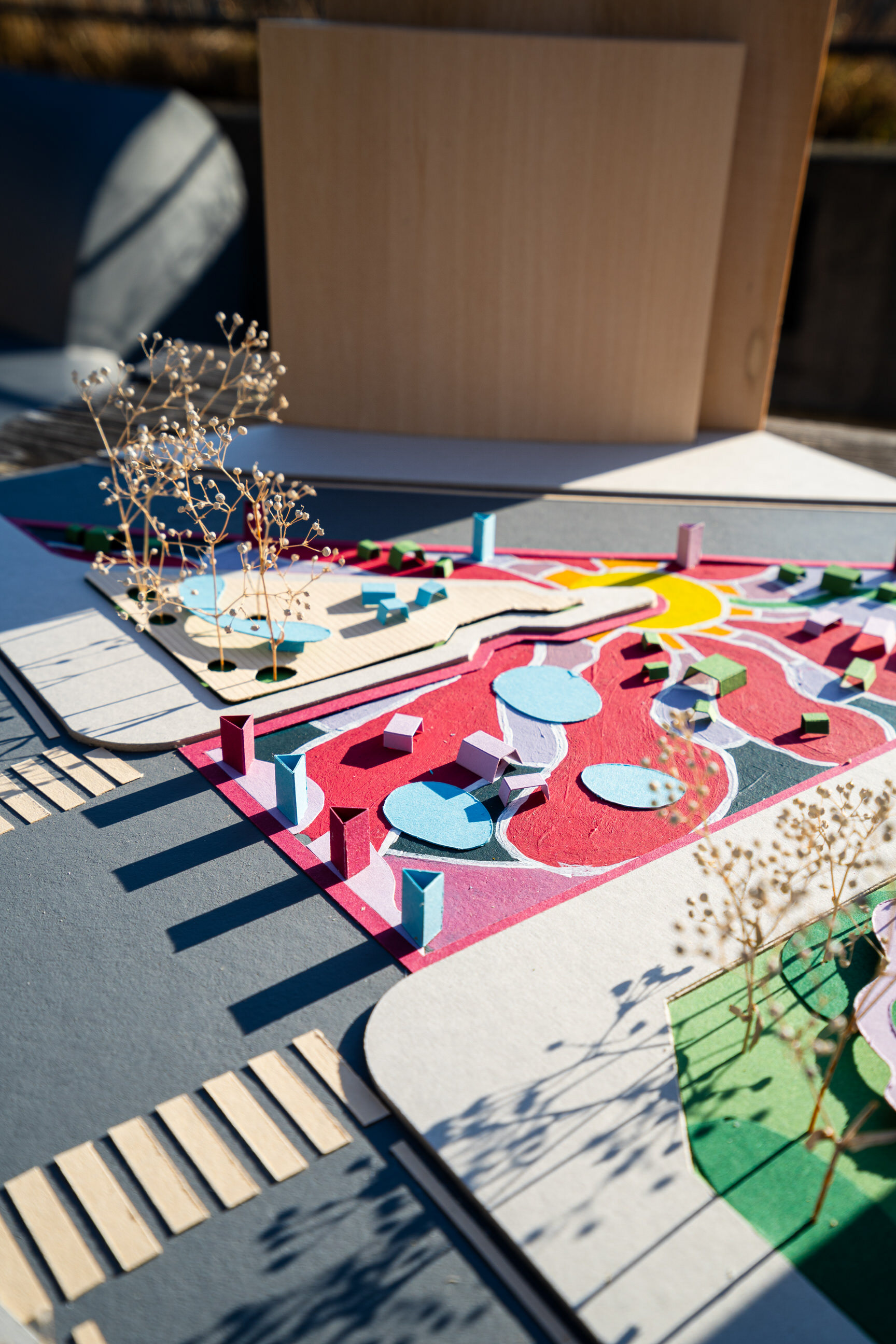Gender, Transit, and a Bit of Fun
Fall 2023
Critic: Chat Travieso
Partner: Precious Ndukuba
Teenagers experience a distinct spatial predicament. Too old for playgrounds and too young for college campuses or bars, teens lack spaces that they can call their own. Moving through the city, teens carve out spaces of autonomy in the public realm, where they are often faced with rejection and scrutiny. If they congregate in public and semi-public spaces like parks, vacant lots, fast food restaurants, shopping malls, or parking lots, they often run into conflict with police, security, administrators and other authority figures that uphold the policy of: NO LOITERING.
What if designers of public space centered the needs of teenagers in the built environment?


The Bronx is home to a wealth of community leaders and organizations, providing creative programs and safe spaces for local youth. However, one of the key problems these organizations face is the consistent drop in enrollment after daylight savings. As daylight hours grow shorter, parents pull their children out of these programs because of the perception of darkness and safety in The Bronx. In order to extend the impact of these community resources, this project proposes a series of interventions that improve night-time safety for youth in The Bronx and make the act of transit just a bit more fun.
In partnership with WhedCo, DreamYard, and other community organizations, our studio developed a set of engagement tools that were used in a series of three workshops with youth in The Bronx. These tools ranged from felt maps for teens to write out different experiences, cardboard cutouts to design their "dream space," protest posters, and question cards with make-shift basketball hoops that prompted teens with different scenarios. While limited, these workshops gave us a glimpse of the world of a teenager growing up in The Bronx.




While teenagers are already marginalized from the typical planning processes, in these workshops we found that the voices of young women and gender minorities further lacked representation. The information on The Bronx that we had gathered was biased heavily toward the perspective of young men (~95% representation). My studio partner (Precious Ndukuba) and I decided to highlight this knowledge gap and focus our project on the experience of young women and gender minorities in The Bronx. The images below hint at these missing perspectives on the map of The Bronx that the studio had created.




Space for teenagers is already hard to come by in The Bronx and typically youth congregate around public parks and commercial corridors. During our site visit, we found a significant discrepancy in spatial occupation for these parks, with young women occupying the bleachers/benches while young men played on the fields. The diagram below indicates this disparity with the pink regions (benches) -- representing less than 2% of available park square footage.

With girls and gender minorities in mind, we set about designing interventions that reclaimed space — not by contesting existing youth spaces like baseball fields or basketball courts, but by activating underutilized spaces near places where youth already frequent. Our project focuses on developing a series of interventions in the public realm, along the route a teenager takes between DreamYard and Yankee Stadium. These interventions were further informed by interviews with local teens and an understanding that youth spaces are not created by simple designation. We hope that these spaces foster agency for teens to claim and remake them on their own terms.
In the diagram below, we identify existing transit options, commercial cores, existing youth spaces, and opportunities for intervention.








Our first intervention is a collection of swings on the medians just outside the Yankee Stadium Metro Station. As a transit hub, people are often sitting on the under-illuminated sidewalk, waiting to transfer to a bus connection or to the metro. We placed swings of different sizes and configurations so that teens, after having picked up a snack from the bodega or McDonalds, have a place to sit, eat, hang out with friends, and wait safely for their next train or bus. We envision this space further transforming through the establishment of an “open street” in between the medians with seating, pop-ups, and other activities.


Continuing down the street toward DreamYard, we transform the long and claustrophobic Lou Gehrig underpass into a community garden, multi-modal skate park, social services center, and covered market. This connects to the residential segment of the corridor which features new design changes including improved lighting arrangements (determined by public workshops) and accommodations for two-way bike lanes and bus loading zones.




Just a little further, at the Bronx Music Hall, the adjacent intersection lacks safe crosswalks and has an over-abundance of sidewalk space and underutilized road medians. After speaking with local teenagers, we developed interventions that include a public performance space and open street for youth to sing, dance, sit, and peruse the nearby pop-up market stalls and food trucks.






